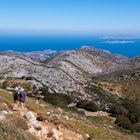
Jan 15, 2026 • 11 min read
Discover France’s best châteaux – from cliff-hanging Pyreneen forts to Loire palaces galore.

Jan 15, 2026 • 11 min read
Discover France’s best châteaux – from cliff-hanging Pyreneen forts to Loire palaces galore.

Jan 15, 2026 • 10 min read
Central Park is where New Yorkers go to get a breath of fresh air and recharge. Here's a handy guide to exploring it.

Jan 15, 2026 • 5 min read
Pick which Sri Lankan coast to visit and stretch out on these idyllic sands.

Jan 15, 2026 • 7 min read
Here’s everything you need to know before traveling to Kenya, from tips on visas, culture, safari guidance and packing advice.

Jan 15, 2026 • 14 min read
Check out these options and create the 1-week, 2-week or 3-week vacation of your dreams.

Jan 15, 2026 • 6 min read
Visiting Muslim countries during the holy month of Ramadan can be an enriching and interesting experience for non-Muslim tourists. Here’s what to know.

Jan 15, 2026 • 8 min read
Learn how the Amtrak USA Rail Pass works, what it costs, the rules, top scenic routes and smart tips to plan a cross-country train trip.

Jan 15, 2026 • 10 min read
Distinct in character (and climate) from Sydney and Melbourne, Brisbane has an underdog energy of its own.

Jan 15, 2026 • 6 min read
Spring in Paris brings sunshine, flowers in bloom and special events. Here are the city's best experiences in March, April and May.

Jan 15, 2026 • 11 min read
The best hikes in Greece offer something for every kind of walker. Try these classic hiking trails, from Crete to the Peloponnese.

Jan 15, 2026 • 8 min read
With ancient temples, exciting wildlife and rich culture, Assam is one of India's most beautiful frontiers. Here's what first-time visitors need to know.

Jan 14, 2026 • 7 min read
Discover the best time to visit Italy with our guide to seasonal tips on weather, crowds, prices and events.

Jan 14, 2026 • 7 min read
Australia is so vast and varied that the best time to visit depends on what you want to do. Here's how to choose the perfect time for your trip.

Jan 14, 2026 • 6 min read
Found high upon a perched crag or in the rolling green countryside, these 10 castles are not to be missed when traveling in Ireland.

Jan 14, 2026 • 9 min read
Algiers is more than a place to pass through when visiting wider Algeria. Here are the best things to do there.

Jan 14, 2026 • 14 min read
The US is home to some of the most diverse spots on the planet for a natural soak outside. Here are the best.

Jan 14, 2026 • 7 min read
Plan the best time for your visit to Florida with this seasonal guide to climate, crowds and events.

Jan 14, 2026 • 6 min read
You'll find so much more in Panama than its famous canal. Get ready for wildlife-rich tropical forests, beautiful beaches and hip urban spaces.

Jan 14, 2026 • 6 min read
In Sri Lanka, adventurous divers can avoid the crowds at more popular destinations that share the Indian Ocean.

Jan 14, 2026 • 7 min read
Discover the best time to visit Rome with our guide to the weather, crowds, prices and events throughout the year.

Jan 14, 2026 • 12 min read
Experience the glittering magic or Paris without spending a dime.

Jan 13, 2026 • 9 min read
People often describe Paris as the "City of Love," but this could just as easily be the "City of Museums." Here are some of Paris' best museums.